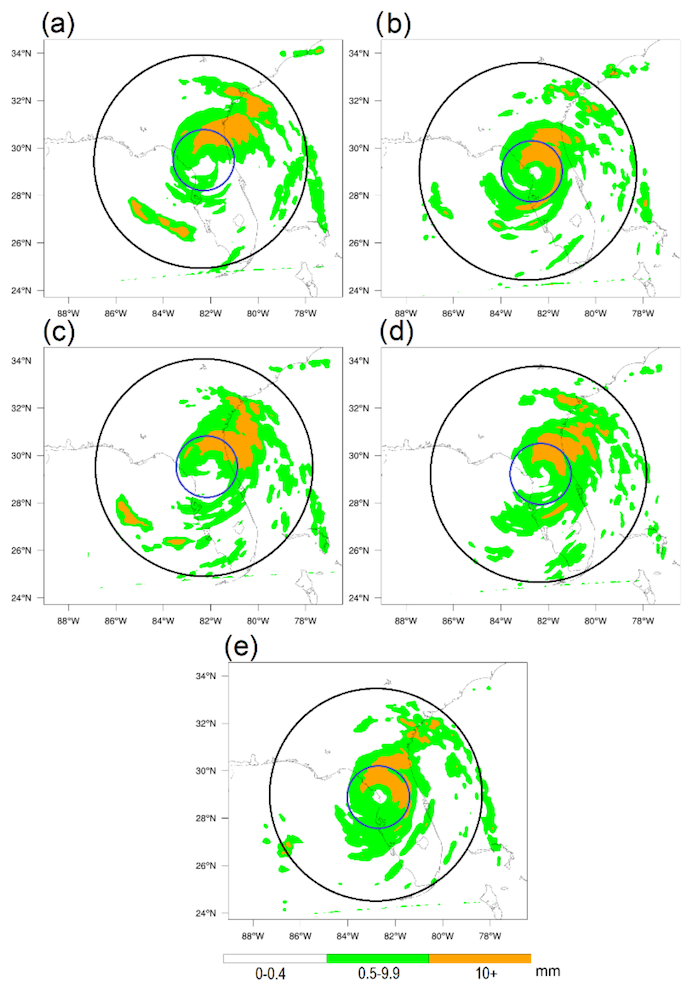
WANG, MATYAS – Simulating the Effects of Land Surface Characteristics on Planetary Boundary Layer Parameters for a Modeled Landfalling Tropical Cyclone
Yu Wang, Corene Matyas
Article first published online: 14 Jan 2022
DOI: https://doi.org/10.3390/atmos13010138
ABSTRACT: This study examined whether varying moisture availability and roughness length for the land surface under a simulated Tropical Cyclone (TC) could affect its production of precipitation. The TC moved over the heterogeneous land surface of the southeastern U.S. in the control simulation, while the other simulations featured homogeneous land surfaces that were wet rough, wet smooth, dry rough, and dry smooth. Results suggest that the near-surface atmosphere was modified by the changes to the land surface, where the wet cases have higher latent and lower sensible heat flux values, and rough cases exhibit higher values of friction velocity. The analysis of areal-averaged rain rates and the area receiving low and high rain rates shows that simulations having a moist land surface produce higher rain rates and larger areas of low rain rates in the TC’s inner core. The dry and rough land surfaces produced a higher coverage of high rain rates in the outer regions. Key differences among the simulations happened as the TC core moved over land, while the outer rainbands produced more rain when moving over the coastline. These findings support the assertion that the modifications of the land surface can influence precipitation production within a landfalling TC.
Read the full publication in Atmosphere.